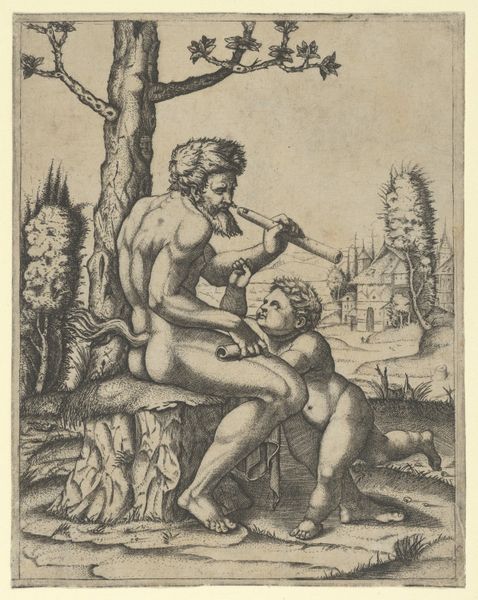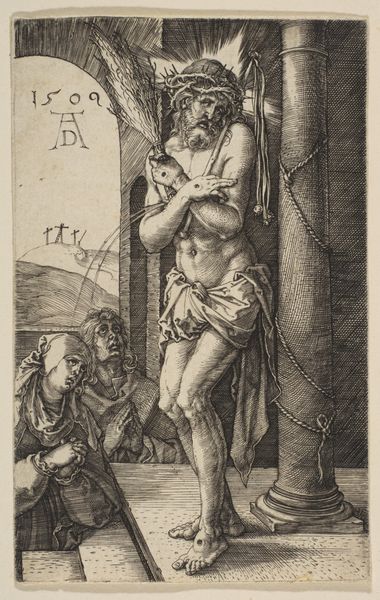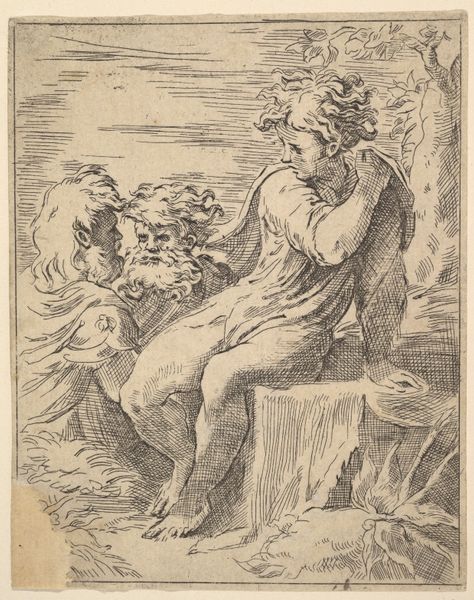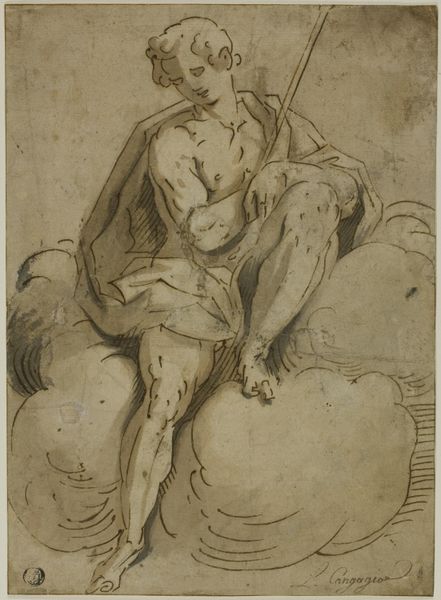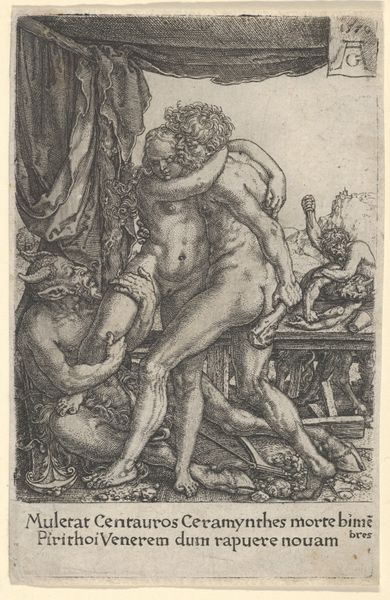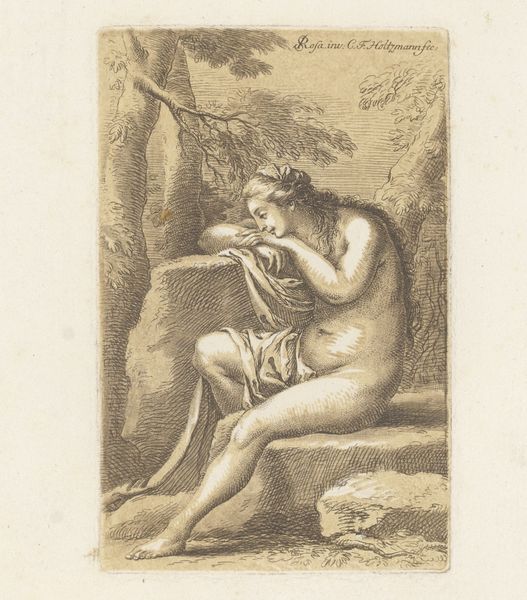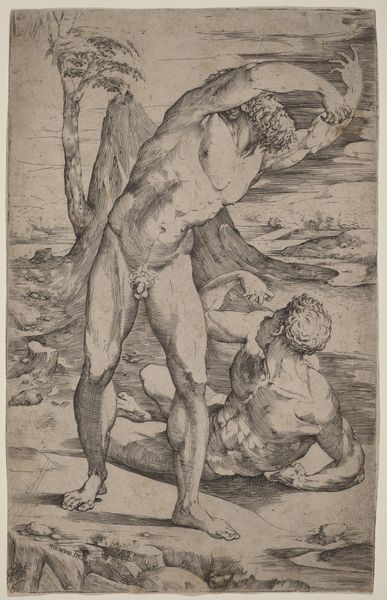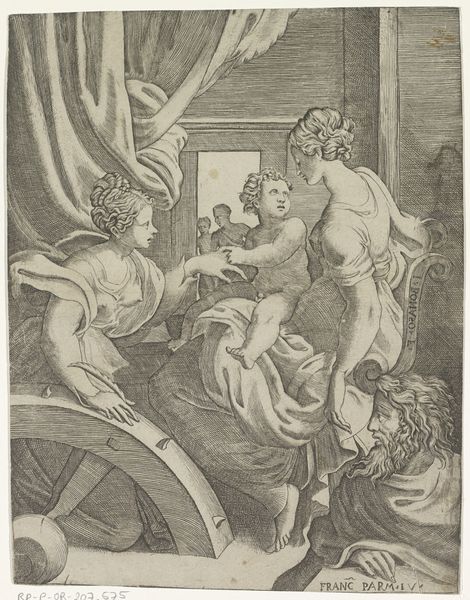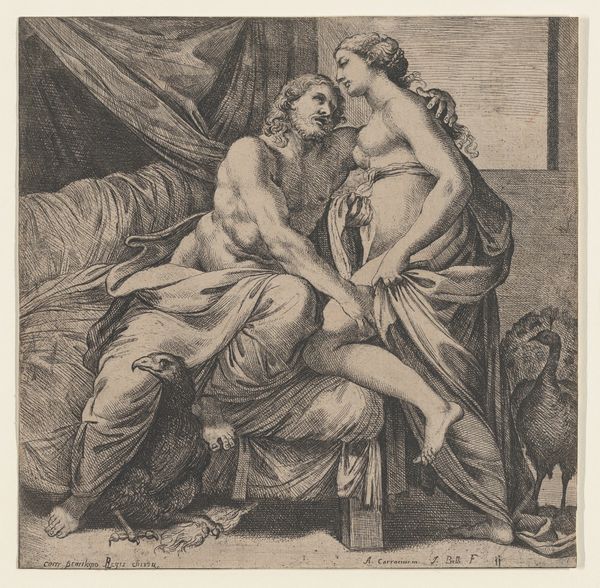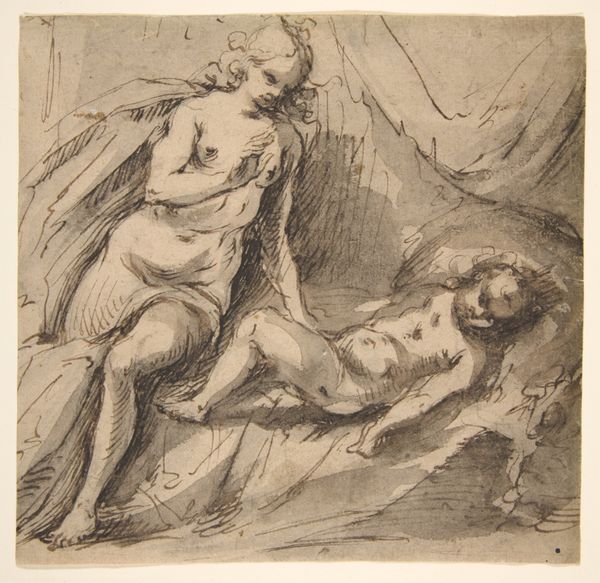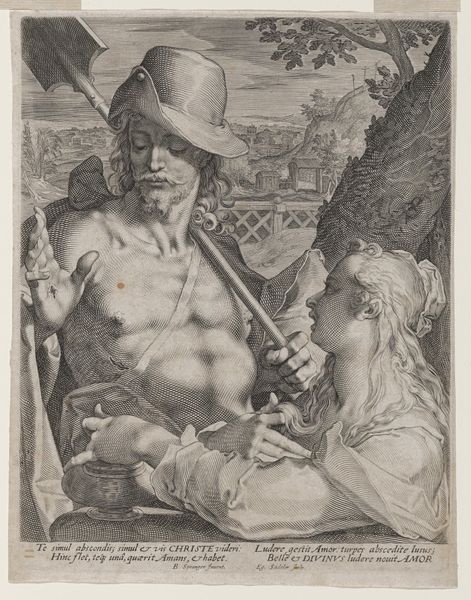
print, engraving
#
portrait
#
allegory
# print
#
genre-painting
#
italian-renaissance
#
nude
#
engraving
Dimensions: sheet (trimmed to plate mark): 8.4 x 7.9 cm (3 5/16 x 3 1/8 in.)
Copyright: National Gallery of Art: CC0 1.0
Curator: Oh, look at this peculiar family gathering. It's called "Satyr's Family" and comes to us from Jacopo de' Barbari, around 1503-1504. A print, an engraving, to be exact. Editor: My initial reaction is… discordant. The satyr, almost comically detailed, fiddling away while the mother nurses her child—the scene has this strange intimacy juxtaposed with that wild musical energy. It feels like stolen moment caught in a tempest. Curator: I find that tension fascinating. This was made during a time of significant social changes when classical mythology, nature, and the Renaissance interest in realism all collided. See how de’ Barbari uses linear hatching? Editor: I do, and that's what gives it that almost feverish quality. There's so much detail packed in here, the satyr's beard, the tiny folds in the mother's headscarf. The technique really draws you into the strange reality they occupy. This also makes it hard to determine what is really the satyr family and where is the viewer's mind filling in the blanks! Curator: And consider the subject matter, Satyrs as you know have historically been seen as associated with revelry, and nature's abandon. However, it is thought they may represent base human drives – what impact do you feel is created in associating the nurturing of family, with the debauched lifestyle that a satyr might represent? Editor: I would agree that Satyrs do get quite the bum rap! But placing the mother-and-child in proximity to what might otherwise be considered "bad behaviour", is interesting for the audience because there is this sort of safety that the domestic gives. In short I feel this image represents nature and the wild, yet humanizing the family, as we tend to. Curator: Interesting. We shouldn’t overlook that strange object floating above their heads, though. Does that symbol mean anything? Editor: Absolutely. What we see here in this "caduceus" (essentially two snakes winding around a winged staff) is what's now recognized as the symbol of commerce due to its association with the greek God Hermes and what would later become his Roman representation, Mercury! Interesting choice for de’ Barbari, no? It makes the image so complex! Curator: Yes. Jacopo de' Barbari has truly spun a whimsical piece. Its details definitely bring us in! Editor: Indeed, so we end not simply seeing but actually having looked closely and found a world we were not quite ready for. I guess there is no telling what is truly real, and what exists as fantasy within.
Comments
No comments
Be the first to comment and join the conversation on the ultimate creative platform.
